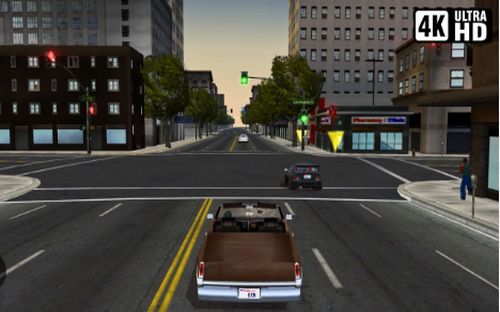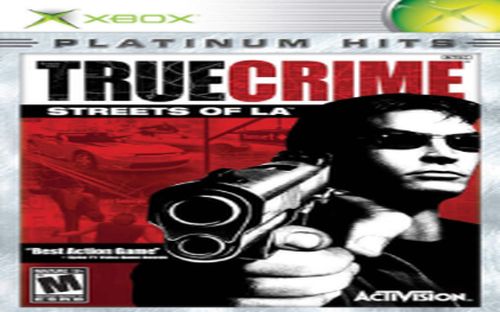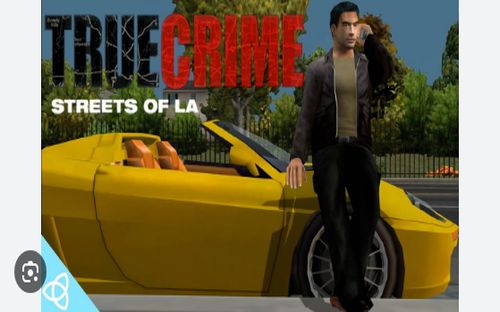In 2003, the open-world action-adventure game True Crime: Streets of LA made its debut on PCs and consoles. It was created by Luxoflux and released by Activision with the intention of providing a cinematic portrayal of the criminal underbelly of Los Angeles from the perspective of an unusual police officer. Grand Theft Auto III, which had transformed open-world gameplay two years prior, was frequently likened to the game. But in order to set itself apart, True Crime included driving, gunplay, martial arts combat, and a branching plotline, all of which were connected inside a rather realistic portrayal of Los Angeles. The goal of the game was quite clear: to give players control over the plot’s resolution while maintaining a tight, narrative-driven structure and a large sandbox.
You play Nicholas Kang, a tough, disobedient ex-LAPD officer who is called up to the Elite Operations Division to look into a string of bombs and gang-related incidents. Kang’s history is greatly inspired by common cop movie clichés; he has a grudge about upholding the law and is tormented by the unexplained disappearance of his father, a fellow officer. The story combines aspects of buddy-cop relationships, criminal thrillers, and even supernatural themes in its various endings, demonstrating the game’s unafraid embracing of both the fantastical and the realistic.

The three primary gameplay elements in True Crime are hand-to-hand fighting, shooting, and driving. With more than 240 square miles of recorded roadways, the city of Los Angeles is well-represented, even yet driving scenes might feel awkward by today’s standards. In between plot tasks, players are encouraged to patrol the city, reacting to random crimes while trying to maintain law and order. Players could choose to behave like a traditional officer or go rogue, and the game would monitor their morals appropriately. This police feature offered a distinctive touch. Numerous narrative consequences were shaped by these choices, which also had an impact on how the tale and citizens responded to Kang.
The game’s bold design decisions are most evident in the fighting system. The combat mechanics, which are evocative of beat-’em-up arcade classics, include throws, blocks, punch and kick combinations, and environmental finishers, albeit they are not very deep. A slow-motion diving technique that was obviously influenced by Max Payne is used in firearm conflicts to provide theatrical flare. These concepts alone weren’t groundbreaking, but when combined into one game, they offered True Crime a sense of complexity. Without significant loading gaps, players might go from a fast-paced vehicle chase to a foot pursuit that resulted in a firefight or a fistfight.
True Crime’s soundtrack, which blends licensed hip-hop songs with creative compositions, is one of its most notable aspects. Snoop Dogg contributed his songs and presence to the game, further establishing it in West Coast street culture. He even makes an appearance as an unlockable character. Additionally, voice acting is a strong suit. The plot gains believability and flavor from actors like Michelle Rodriguez, Gary Oldman, and Christopher Walken. The game’s usually cliched plot was elevated by these performances, which also made the cutscenes much more entertaining than they should have been.
For its time, the branching plot structure was comparatively novel. The game will split into many storylines according on whether you successfully finished assignments, released suspects, or used excessive force. The game became more replayable as a result of the several endings that resulted, some of which had supernatural twists. Experimentation was encouraged by this narrative design, which also gave the player access to various plot arcs and the results of their choices. Prior to more sophisticated systems discovered in subsequent titles like Mass Effect or The Witcher, it was an early effort at moral choice in open-world games.



True Crime: Streets of LA has problems despite its numerous concepts. The controls could seem awkward, especially when driving. Although adequate, the graphics never really captured the scope and aspirations of the game’s concept. Over time, the experience was also degraded by bugs and monotonous tasks. However, its sheer diversity frequently made up for its lack of polish. True Crime provided some creative anarchy during a period when the majority of open-world games adhered to a strict structure. You may spend hours tracking down criminals, issuing citations, or simply driving around Los Angeles while listening to beats, ignoring the main topic.
System Requirements OF True Crime Streets of LA Highly Compressed PC
| Ram | 256 MB RAM |
|---|---|
| Processor | Pentium III 1.8 GHz |
| Accessories | Keyboard, mouse, and speaker |
| Graphics card | 1 GB |
| Windows | Xp, 7, 8, 8.1, 10, and 11 |
| Free disk space | 2.39 |
When it was released, critics were divided. While some criticized its technical issues and erratic gameplay, others applauded the film’s scale and cinematic ambition. Nevertheless, it was a commercial triumph, selling more than three million copies globally. Over the years, its cult appeal rose, particularly among those who valued its strange tonal swings and unreserved appreciation of the aesthetics of police films. Its popularity prompted a follow-up, True Crime: New York City, but the series was terminated before it could develop because it lacked the same appeal and made major blunders.
The way that True Crime: Streets of LA anticipated several open-world design concepts is among its more intriguing features. It presented the earliest ideas of morality meters, procedural criminal events, and a dynamic environment that changes depending on what the player does. Although they would subsequently be improved upon in more renowned novels, True Crime established some groundwork. Games like Sleeping Dogs, which began as a True Crime sequel before being renamed, were also made possible by it. True Crime’s significance was cemented when its spiritual successor refined many of its concepts.
In retrospect, even if it wasn’t always successful, True Crime: Streets of LA was a game that dared to accomplish a lot. In a sea of Grand Theft Auto clones, it stood out thanks to its hybrid gameplay concept, stellar voice cast, and distinctive approach to story advancement. It’s a flawed treasure with many daring choices, and even while it might not be considered one of the greatest of all time, it merits praise for taking chances and providing a really unique crime-fighting experience in one of the most famous cities in America.


